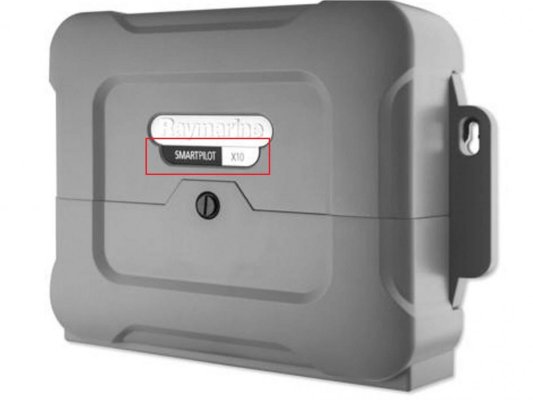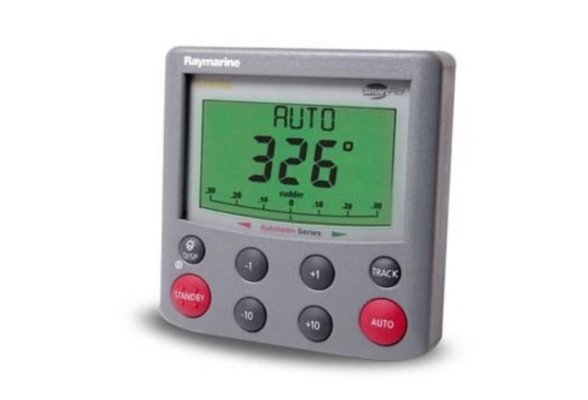Hippocampus
Guru
- Joined
- Jul 27, 2020
- Messages
- 3,908
- Location
- Plymouth
- Vessel Name
- Hippocampus
- Vessel Make
- Nordic Tug 42
TT my understanding is the AI in the AP analyses past behavior of the boat as it holds a course. It learns things like every fifth wave is larger or intuits there’s two wave trains from different angles. It also learns what to expect from different rudder inputs at different speeds. It also collects from other sources current and wind effects and predicts what effect they will have. In short it’s doing a multi factorial analysis. As you know a really good helmsman is turning the wheel (or moving the tiller) ahead of the boat going off course. So the boat doesn’t deviate. A really good helmsman uses the least steering you can get away with as steering creates turbulence and parasitic drag.
Although daschews boats are larger and thinner for most small boats Allard Coles teachings still mostly hold half a century later. In the true snot you ride up at a slight angle. Turn perpendicular at the top. Surf down at a slight angle to prevent borrowing your bow at the bottom but making sure you don’t broach. That requires a fine touch and I don’t think most APs can do that. So we take 15 minutes stints at the helm. My understanding is the current generation of high tech APs can do it.
Motor has an advantage. It’s easier to vary speed. Climbing a wave you can give more throttle and less on the backside. Sometimes you can keep yourself in the same relationship to the wave with your bow slightly up. Usually just after the trough where the wind is less. I think most APs can do that with you constantly playing the throttle. Also with power by varying throttle you have more opportunity to have water flowing around the rudder so there’s still an effect from steering. The scariest thing for me is surfing at the same speed as the wave on a sailboat. Then turning the wheel does nothing.
However at this point in my life I don’t need the thrill. When I was ocean just carried a JSD for such occasions. Storm tactics were totally passive. Now coastal I try to never be in such situations. So my low tech AP is just fine with me. One of the reasons LDL ocean boat appeal to me is although power they should do as well as sail if not better with a JSD. I don’t like sea anchors. Think they are too hard to work with, recover and steering gear is at risk if the boat backs up. Boats are designed to go forward. Reverse is a low speed maneuver in calm conditions.
Most common AP failure point is the rudder angle indicator and then the drive unit in my limited experience. I like recent offerings aren’t as vulnerable.
Although daschews boats are larger and thinner for most small boats Allard Coles teachings still mostly hold half a century later. In the true snot you ride up at a slight angle. Turn perpendicular at the top. Surf down at a slight angle to prevent borrowing your bow at the bottom but making sure you don’t broach. That requires a fine touch and I don’t think most APs can do that. So we take 15 minutes stints at the helm. My understanding is the current generation of high tech APs can do it.
Motor has an advantage. It’s easier to vary speed. Climbing a wave you can give more throttle and less on the backside. Sometimes you can keep yourself in the same relationship to the wave with your bow slightly up. Usually just after the trough where the wind is less. I think most APs can do that with you constantly playing the throttle. Also with power by varying throttle you have more opportunity to have water flowing around the rudder so there’s still an effect from steering. The scariest thing for me is surfing at the same speed as the wave on a sailboat. Then turning the wheel does nothing.
However at this point in my life I don’t need the thrill. When I was ocean just carried a JSD for such occasions. Storm tactics were totally passive. Now coastal I try to never be in such situations. So my low tech AP is just fine with me. One of the reasons LDL ocean boat appeal to me is although power they should do as well as sail if not better with a JSD. I don’t like sea anchors. Think they are too hard to work with, recover and steering gear is at risk if the boat backs up. Boats are designed to go forward. Reverse is a low speed maneuver in calm conditions.
Most common AP failure point is the rudder angle indicator and then the drive unit in my limited experience. I like recent offerings aren’t as vulnerable.
Last edited:



